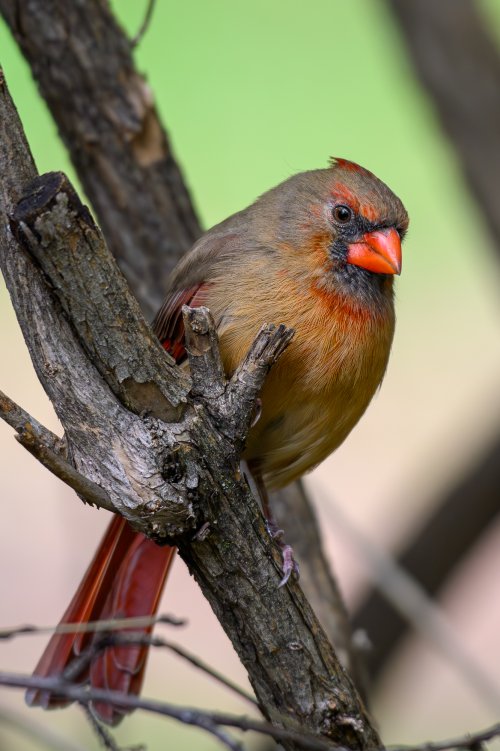Actually the sort of conditions you describe are the norm for my shooting - lots of poor light and suboptimal conditions. In fact, most of the photos I shared on the other thread don't represent ideal light: they represent a lot of effort put into editing because with one or two exceptions the light was quite poor - not just in terms of brightness but in terms of its quality, too - the ISOs were quite high, and several of them had to be cropped, in at least one case a crop that took a 45 MP image down to about 5 MP. In fact, I feel extraordinarily confident that the vast majority of samples shared from the 180-600 are in far, far better conditions and light than the photos I take on a day to day basis. The truth is that more than a lens, I really need to find better locations and work out a better way to shoot in better light!
Just to give an idea, here is a photo I was working on as I browsed the forum tonight, both my edit and the original:
The original is what it really looked like: it was very dark in the brush where the bird was perched, and even outside of that cover there was not much light today anyways. The bird fills the frame reasonably well, except that it is a DX frame and so there is little room to crop. Typically I will shoot creatures that fill only half as much of the frame as this.
So, as I compare these lenses I am always cognizant of the fact that the quality I am seeing from my current lens is actually in most cases even
more of an improvement over samples I see than on first impressions, since most of the samples I see I have to assume were taken in better conditions with better light.
I would say that I share your experience regarding BIF: the 200-500 has been fairly poor for that. If anything, its a primary reason I want to upgrade. On the other hand, because I am often shooting animals at further distances away I am also very much concerned with sharpness. I have seriously considered a 500pf, which I think would better address both of these problems than the 180-600 - but I really do use the zoom a lot and I do think I'd lose a lot of shots without it. For instance, just in the past two days I had these two which necessitated using the zoom to get the shot.
www.cameralabs.com


